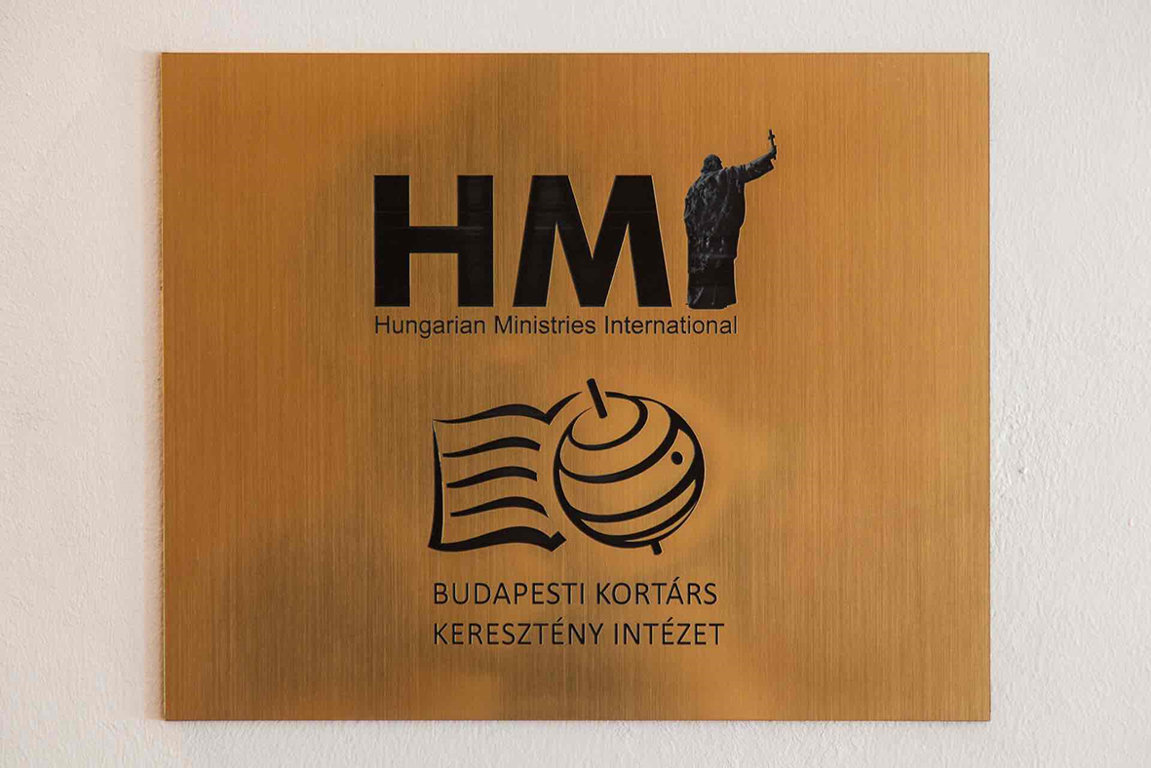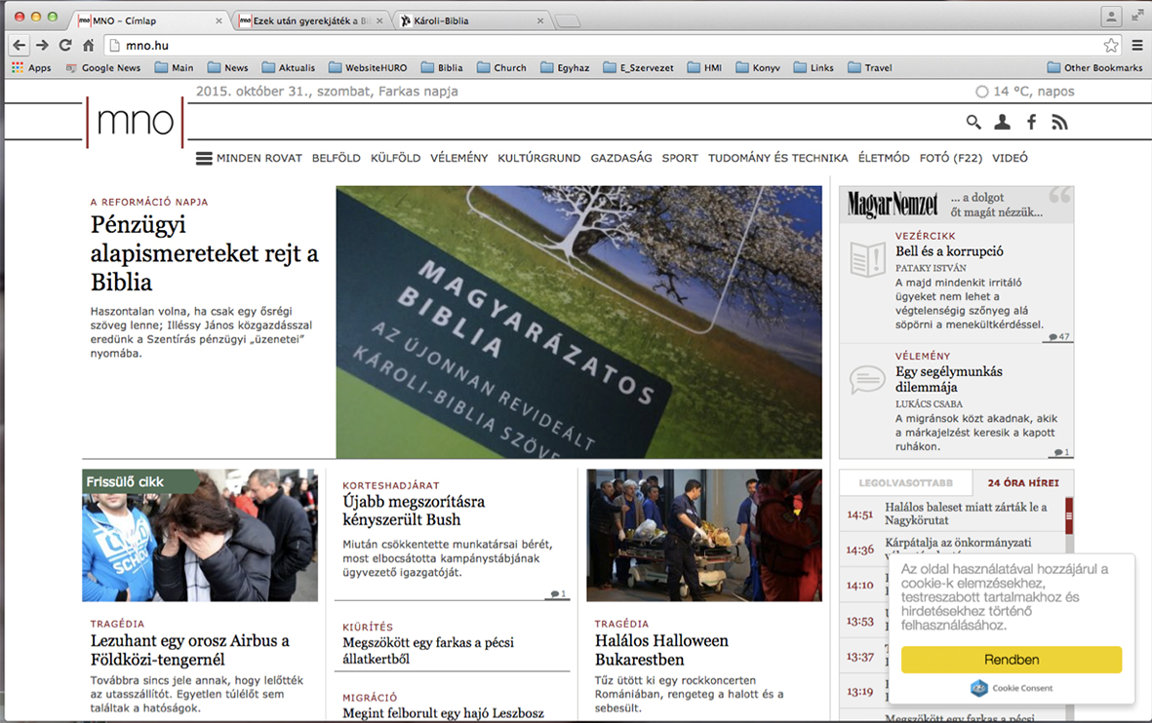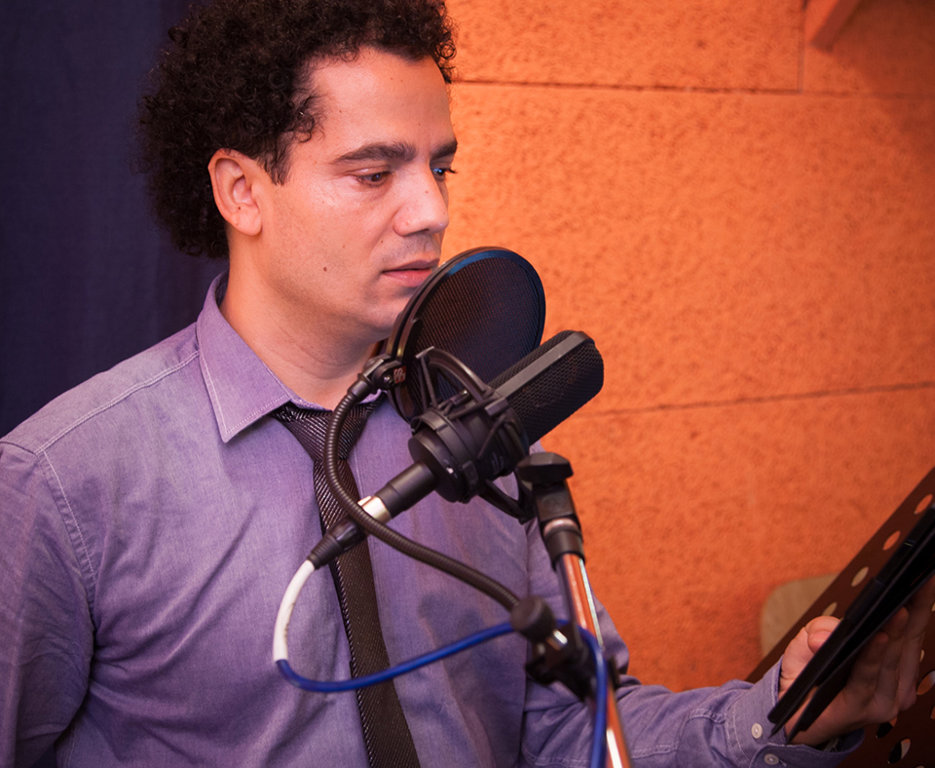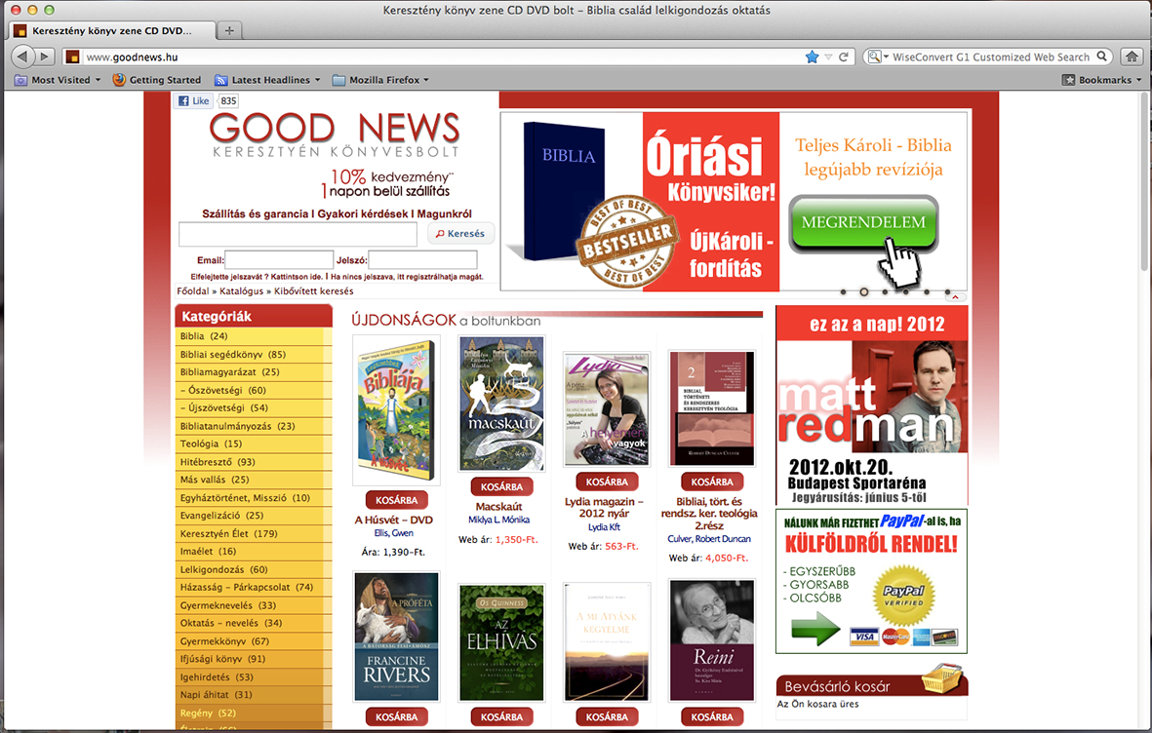New milestone

Faith comes by hearing
Our new Bible

Responses
“Joseph, I wanted to thank you again for
everything from this past week. After meeting with you and Tamas and
Kalman, I was able to Skype with my father before I flew home. It was
great to see his eyes light up when he heard about the Ministry that would be
taking place because of men like you who are willing to stand in the gap. This
was the last time I spoke with my father, as he went to be with the Lord this
evening at 8:30pm. Thank you for helping me to give him that final gift.
He spent his entire life in media ministry and he loved to see what God
was going to do next.”
We met the author of this letter
recently and we offered to help him produce the Roma version of the Hope film
in two new languages: the Lovari and the urban (spoken) Roma. A few years ago, we produced the Hungarian
version and at this time we would like to reach the Roma in Hungary and also in
the surrounding countries, like in Slovakia, Ukraine, Romania and Serbia. You can pray for this film project, it will
affect more than a million people. In
the next few months, I will be busy traveling around the country and beyond,
meeting with the various participants of this project. I already met several of them and everybody
is excited about this new outreach.
In my last info, I was glad to report:
“our recently published Student Bible with the notes of Philip Yancey and Tim
Stafford became such a success, that it is used not only individually and in
the public educational system, but also in the Hungarian Army. All the
chaplains and their assistants were provided a copy of the book that they are
using in their outreach. It seems that we will have to reprint a second
edition before the end of this year.” Well, since only a few hundred
copies are left, we had to sign a new contract last week with the printer to
reprint the book. Unfortunately, within less than six months, the printer
raised the cost by ten percent. But we are willing to go this extra mile,
because thousands of new readers are waiting for the new edition. First,
we printed less hard copies and more paper back editions. Now, we have to
change the ratio. Even the hard-to-convince theologians like the book.
I could go on and on to report the readers' responses. Here you can read just a few:
“Although journalists are the authors of
the notes of this Bible edition, theologians agree: it does not matter who
wrote it or where it has been written, with what kind of degree, the final
result is outstanding.”
A well-know authority recommended the
book in the following way: “This is an easily understandable good Bible
translation, even for the modern man. However, the easy readability does
not mean loose, simple style, but it is still literarily rich and has very high
standards. The commentaries help a great deal to understand the context
and the events connected with the situations, although the Holy Spirit
actualizes the text of the Bible in the individual’s life.”
Another opinion: “One of the greatest
strengths of this Study Bible is that it leads us to the understanding of the
original Bible text. Even the Facebook generation is willing to turn its
attention to this spiritual source, because they can find here something that
they miss otherwise.”
“We cannot give faith to the people, but
we can give them the Bible in an understandable form, which can create faith in
their hearts. Although the commentaries were written not by theologians,
we should not forget the Bible was not written by professional theologians
either” – emphasized a Lutheran theologian.
Joseph's trip
The Shortest Work Phase: Ten Thousand Hours
A Conversation with Bible
Translator Joseph Baranyi
According to legend, 72 people translated the Septuagint, the Greek translation of the Hebrew Bible, in 72 days in the 3rd BC Century. Based on an eight-hour workday – this is 41,472 hours. We do not have specific data as to how many hours the translators, theologians and scholars had to work on the recently published, modern-looking and very appealing revised Karoli-Bible, but one thing is certain: the comparative Bible text analysis alone – one of the shortest work phases - took eight people, eight hours a day, for eight months (ie. about ten thousand hours of work - - weekends and holidays excluded). And that was far from the end of the process. We are asking Joseph Baranyi, head of the Bible revision process, about this not-so-ordinary translation project.
Tell us when and how the idea took shape in you that
by revising the Karoli Bible translation you would give a modern Bible into the
hands of Hungarian readers?
I too belonged
among those who while reading the Karoli Bible, automatically modified in their
minds the archaic verb forms. But for a
long time, I did not think that this needed to be recorded in print. To me, it seemed much more important to
create a Concordance to the Karoli Bible.
I found it very painful that for a more serious study of the Bible, the
Hungarian Bible reader was forced to always use foreign language concordances. Finally, after many years of hard work, I
completed a Concordance, which was published in 1995. Along with the Concordance, I now had the
entire Bible text in my hand, recorded in the computer, which, one could say,
prompted the possibility to modify the written text. While as far as the preparation of the
Concordance was concerned, my person alone proved to be adequate, I was aware
that the revision work required a highly trained group of professionals who
shared my view of modernizing the archaic texts’ value. Nevertheless, before we would have touched
the text of the Bible itself, I intended to publish another important biblical
reference book: the Hungarian edition of the NIV Study Bible, to which, of
course, we used the Karoli Bible as a basis.
I thought that the Karoli Bible, which has over the centuries become the
“book of the people”, deserves the right to be combined with the world 's most
popular Study Bible edition. The
Hungarian edition of the NIV Study Bible was the work of 26 renowned
theologians, linguists and literary scholars.
It was published in 2001 and paved the way before us to the ultimate
goal: the revision work.
How did the revision process work out? Who were the
assistants on the job?
The revision work
took more than ten years, had countless stages and required the participation
of 27 specialists. Theologians,
university professors, linguists, pastors, scholars of the biblical and the
Hungarian languages lined up along with many other professionals to create the
long overdue work, an easy-to-read Karoli Bible, which had been anticipated by
the readership of the Bible for decades.
A modern Hungarian translation of the Bible already existed, but the
familiar language of the centuries-proven Karoli Bible is still the preferred
choice for most people. When writers and
poets want to quote from the Bible, they always use the Karoli Bible text.
In the first phase
of our work, someone prepared the so-called main text, which was compared verse
by verse with the earlier versions in the second phase. This comparative analysis was completed by 8
people for 8 months, in 8 hours a day 's work.
In the next phase, these texts went into the hands of literary,
linguistic and theological scholars who worked on it for several years. This phase was the longest session. It was followed by the final
proofreading-editing, a process which also took several years. We later publicized the list of participants
in the work. The New Testament part of
the revision was published in 2007, and we were able to present the entire
Bible to the public in 2011. Today,
there are 23,000 entire Bibles and nearly 7,000 New Testaments in circulation.
In looking back, can you recollect some of the moments
in the preparation process which have become particularly memorable?
It would indeed be
a long list of memorable moments, since the overflow of spiritual munitions
that have accumulated in me over the years resulted in a book entitled For Lack of a Better. However, the case of my first telephone conversation
with Professor Ferenc Szilagyi, the first Dean of the Faculty of Arts at Karoli
Gaspar Reformed University, certainly belongs at the top of the memorable
moments list. The Professor himself
recalled this occasion in the Reformed Journal’s article entitled Whom God Took By His Word:
I once again began
to regret that I was afraid of the revision work back in 1995, partly due to
the magnitude of the task, partly due to the difficulties it entailed, as it
required Hebrew and Greek knowledge to find the correct and best formulation,
but still I was tempted to take this [revision] work and finish it. Then the phone rang in the next room, along
our quiet little Windmill Street, my birthplace; and “Joseph Baranyi” said a
voice at the other end of the line, and the caller would have started to
introduce himself with reference to His Concordance to the Karoli Bible. However, I happily cut him off, and almost
jubilantly informing him that I had just the other day written his name, that
his Concordance was by my side, and that I just been mentioning in my article
for the Reformed Journal that it was right that he relied on the text of the
most popular [Karoli 1905-1908] revision and did not go back to the outdated
original.
“That is the reason
why I am calling you,” he said, “because we started the revision of the
1905-1908 Karoli edition, and I would like you to be involved in the work…”
‘God took me at my
word’ said the Voice within me, and I immediately repeated it to our friend, in
whom the Word of God and serving the Hungarians is as intertwined as in the
people of the Reformation era in whom "great resistance was hemmed against
great faith" with such a palpable force that it resonates still today, and
I believe that this faith must come across again in our translation, if we do
not want to be unworthy of the great work of our predecessors, the original
[Karoli]. (Reformed Journal, January 2,
2005)
Did you meet any resistance? If so, what type of
criticism did the project have to face?
Perhaps there is
no scientific work that does not meet with opposition or criticism. It was so in our case as well. While some considered the matter closed with
the 1908 edition of the Karoli Bible, others, following the footsteps of
predecessors and keeping international precedents in mind, wanted to carry on
the Bible text emblazoned by the name of Karoli, but in a modernized form. If the German Luther Bible could be revised
in 1964, and the English Authorized King James version could be modernized in
1975, then we Hungarians should also address the legitimate claim of desiring
to have a readable, modern version of the Karoli Bible. That is why Szenci Molnár Albert revised the
text of the first Karoli edition (the Bible of Vizsoly), continued by the
pastors of Nagyvarad thirty years later.
For this reason, Komaromi Csipkés Gyorgy (my ancestor) touched the text
of the Karoli Bible in 1685, and later on M. Totfalusi Kis Miklos, and the
editors of the 1908 edition.
As the
Protestant Media Foundation President and caretaker of the revisions, I
expressed several times that we do not have to revise the Karoli Bible for the
purpose of saving Karoli’s name from sinking into oblivion, but rather to keep
the monumental effect that the Karoli Bible translation has had on the
Hungarian nation alive.
Professionally,
that is from a theological, linguistic, and literary point of view, there has
been no real criticism to my knowledge regarding our Bible edition, and in
April of this year there was a two-day Bible conference hosted by the Karoli
Gaspar Reformed University where we were also represented.
What feedback have you received in connection with the
translation?
Naturally, we
receive a lot of positive feedback, in which the recurring refrain is that the
Karoli Bible characteristics have been preserved and yet we were able to
produce an easy to read text. In the
most recently published school textbooks, the Bible quotations are coming from
our revised Karoli Bible, and we get more and more feedback from other
publishing houses that quotations from the Bible are also coming from our
edition. Our revised Karoli edition has
also appeared in various smart-phone applications and in the world of modern
electronic devices we seems to have a winning position against other Bible
translations.
What do you think, how much can be attributed to the
outside appearance and how much to the inside content in the new edition's
popularity?
For
my part, I am very happy that I do not have to fight alone like Don Quixote,
but rather that I have a young, talented staff beside me who have embraced my
cause and carry it on, supplementing the things that were missing in me. Thomas Gyori, Lutheran pastor, is one of the
people to whom I am indebted for his hand in beautifying the outside appearance
of the revised Karoli Bible.
The
article was written by Petra Szucs in a Hungarian Lutheran Newspaper on September 22, 2013.
The Voice of the Bible

Bible in the supermarket
In May we have had another campaign popularizing our Bible, along with several dozen
newspaper and Internet news articles, we had the opportunity to appear on
national television and other major television and radio stations. One of the results of this campaign was that now the largest supermarket chain in the country
is also distributing our Bible.

Another
sign of the popularity of our Bible is that since last year, Hungarian public schools have begun using
our Bible edition in their schoolbooks when quoting the Bible. Page
after page from the Old and New Testaments are quoted from our newly
revised Karoli Bible.
Huge success

Speaker of the House
Successful campaign
Good news
One
can read in the April 2, 2012 edition of a major daily newspaper in Hungary the
title KAROLI RELOADED next to the picture of the President of Hungary, who
unfortunately resigned today. That was the bad news of the day. But the good
news is that the KAROLI RELOADED subtitled “After this it would be child play
to understand the Bible”. This is a very positive front-page article about our
recently published Bible edition, which get special attention in this Holy
Week.
